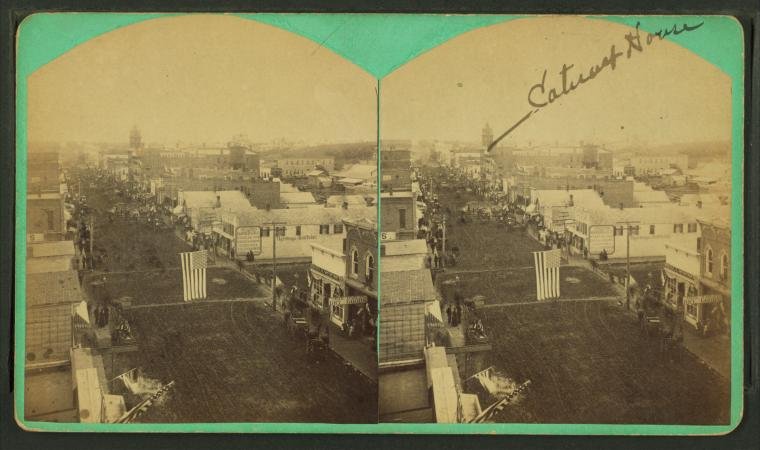So what about Arthur Voegtlin, the younger brother in this theatrical family? He saw the messes that his father and brother got into and steered clear of trouble, right? Not so much.
Arthur Voegtlin photo via Billy Rose Theatre Collection, New York Public Library of Performing Arts
When he was twenty, Arthur either played a prank on Emil or spread some of his brother’s gossip to an editor who put it in print. Either way, the New York Mirror announced in March 1882 that Emma Carson was engaged to Emil Voegtlin. The week following the announcement, the trade paper printed this retraction:
“Emma Carson, of Mitchell’s Pleasure Party, telegraphs from Portland asking us to deny the report published last week of her engagement to Emil Voegtlin. We acquiesce with pleasure, for Miss Carson is a charming little actress who should not think of leaving the boards and settling down to married life at the beginning of her career. The publication of the statement she denies was requested as a particular favor by Mr. Voegtlin’s brother.”
I’m so curious about the circumstances behind this: jealousy? good intentions when Emil had exaggerated their relationship? At least the writer made it clear that the information was passed on by Arthur and not Emil himself. Here’s Miss Carson a couple of years down the road, still treading the boards:
Card 897, Emma Carson, from the Actors and Actresses series (N45, Type 2) for Virginia Brights Cigarettes via picryl.com
The following year, Arthur Voegtlin took his first (and perhaps only) trip out of the country, helping to construct and paint sets for a new theater in the Caribbean, in what is now Guyana. In May 1884, he married first wife Emily in Yonkers, NY. I still haven’t gotten ahold of their marriage certificate and don’t know her maiden name. Did you notice I wrote first wife?
While Arthur Voegtlin made his name as a scene painter working for playwright Charles Hoyt, he treated Emily cruelly. The couple separated in fall 1892, and Mrs. Voegtlin moved to Sioux Falls, South Dakota in Fabruary 1893, where she lived under the assumed name of Mrs. Varian. Why Sioux Falls? Because, as I discovered when reading April White’s fascinating recent book The Divorce Colony, that was a place where wealthy white women from the east took up residence when they wanted to divorce their husbands. South Dakota let people establish residency in a briefer amount of time than other states, and its judges were more amenable to granting divorces in the case of violent treatment, neglect, or abandonment.
The Miriam and Ira D. Wallach Division of Art, Prints and Photographs: Photography Collection, The New York Public Library. "Sioux Falls showing American flag flying over street, building identified as Cataract House." The New York Public Library Digital Collections. 1850 - 1930. https://digitalcollections.nypl.org/items/510d47e1-6f90-a3d9-e040-e00a18064a99
Their divorce case brought some attention in the papers, mostly in the Upper Midwest. Emily testified that her husband threatened to kill her multiple times. Arthur responded that those claims were untrue and that she had an inappropriate friendship with Herbert Rosenfeld, a wealthy and married photographer who loaned Emily $400 when she moved to Sioux Falls. (This is not the same Herbert Rosenfeld as the British psychoanalyst.)
The case was decided in Emily’s favor. I need to find out her maiden name so I can figure out what became of her post-divorce. A few articles about the case note that she was a newspaper and magazine writer, and I really want to hear more from her point of view. Writing a story like this where many of the main characters lack extensive archives, I have to leave some loose threads hanging for now.


